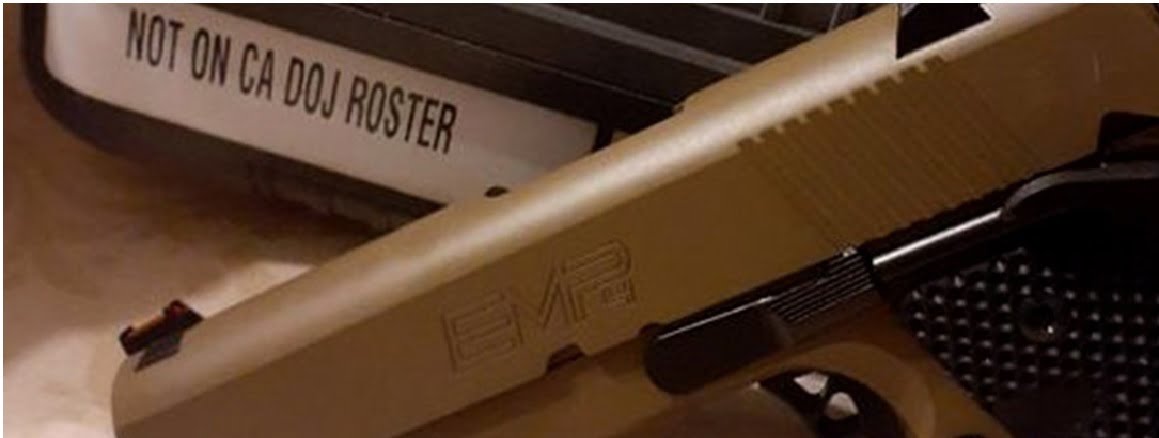The Dreadful and Useless History of California’s Microstamping Laws
NSSF Shines a Necessary Light on this Defeatable “Technology”
In 2013, the scourge of microstamping descended on the state of California – and with it a multitude half-truths and out and out lies about the technology. At the outset, Gun Owners of California was heavily involved in opposition to any microstamping mandate. Sam Paredes, GOC’s Executive Director spent countless hours testifying in committee and in private meetings with legislators, physically demonstrating how easy it is to defeat the technology with something as simple as a nail file – or by exchanging the firing pin itself. This law was insincere then – because it did nothing to prevent criminals from committing crimes with a firearm – and is dangerous now.
GOC is pleased to repost the following article by Larry Keane, Senior Vice President of the National Shooting Sports Foundation. It is certainly worth a read – it flawlessly describes the situation we are facing in California and the challenges ahead.

MAY 4, 2022
CALIFORNIA IS STARVING THE AVAILABILITY OF LAWFUL HANDGUNS
By Larry Keane
California is pulling off a vanishing act right before everyone’s eyes. The list of semiautomatic handguns available for sale there is rapidly dwindling, thanks to the state’s “Not Unsafe Handgun Roster.”
It won’t be too long before all semiautomatic handguns will be banned from sale in California – a step closer to gun control’s ultimate goal of banning lawful civilian firearm ownership. The California “Not Unsafe Handgun” law enacted in 2001 started a slow motion statewide handgun ban. The ban picked up momentum in May of 2013 when the 2007 law requiring microstamping on all new pistols became effective upon then-Attorney General Kamala Harris certifying microstamping technology was unencumbered by patent restrictions. There were 967 models available for lawful purchase when the roster was certified less than a decade ago. Today, there are under 250 available models, when different paint schemes are considered.
California Dreaming
California’s lawmakers started the process of denying citizens the ability to purchase modern semiautomatic handguns with legislation introduced in 1999. The law, introduced as SB 15, required that any handgun that is sold in the state, and capable of being concealed, must be tested by a certified laboratory and determined to be “not unsafe.” The criteria in 2001 was that every handgun had to contain three “safety” features, including an indicator that shows if a cartridge is present in the chamber, a mechanism that prevents a firearm from discharging when the magazine is removed or not present and the third is to incorporate unworkable microstamping technology.
The problem is that microstamping just doesn’t work. Microstamping is the theoretical notion that a firearm would impart an identifying code on the cartridge it expends, primarily from the firing pin on the primer. In theory, this would allow law enforcement to connect spent cartridge cases collected at crime scenes with a particular firearm by matching the identifying code.
In practice, it doesn’t work. The inventor of the technology, Todd Lizotte, who holds the sole-source patent to etch microscopic codes on the face of a firing pin, agreed that the technology wasn’t ready for widespread commercial use. Lizotte admitted that alphanumeric codes are often illegible under even perfect conditions. Electron microscopes couldn’t detect legible codes in testing. Even in laboratory settings, it would take at least 10 spent cartridges to make an “educated guess” to piece together a legible code. Third-party researchers agreed.
Facts Be Damned
It doesn’t take much to defeat microstamping. The technology can easily be negated with sandpaper or a nail file as the mark is only 25 microns (half the diameter of a human hair). Criminals already obliterate serial numbers etched into a firearm frame.
California lawmakers ignored that, passing another mandate in 2020 that every handgun must incorporate single-placement microstamping. Democratic Gov. Gavin Newsom signed a law in 2020 that reduced the marking requirement to a single location but sped up the roster. For every one handgun that would be added, three would come off.
There have been no new models added to the roster since 2013, thanks to this mandate and the state’s interpretation that even minor cosmetic changes constitute a new model requiring microstamping. The list of handguns available for sale, however, has shrunken considerably – by nearly 75 percent. It will only pick up speed. Starting in July, the requirement for three handguns to come off the list goes into effect.
The trifecta of an unworkable requirement, a self-defeating mandate and a shrinking pool of commercially-available firearms means Californians are witnessing a slow motion ban on an entire class of firearms before their very eyes.
To read more about NSSF and their excellent articles, click HERE. To read additional pieces from GOC on the issue of microstamping, click HERE.

It is not startling that gun control activists who dwell on constantly about “common sense” gun limitations and the requirement for permanently legislative reforms aren’t specifically interested in whether the different bans and other limitations actually authorize as “common sense” or useful, so long as the end consequence is fewer guns. A decade after the Heller case was determined, however; several of our nation’s courts present much of the similar mindset. The law became useful instantly when the California Department of Justice approved that the technology used to generate the mark was accessible. When this authorization occurred in 2013, the State explained that the certification fixed only “the absence of any patent limitations on the imprinting technology, not the accessibility of the technology itself.” In layman’s terms, the state was saying that nothing was putting a halt to someone from developing the technology, so it was “accessible,” even though it wasn’t.